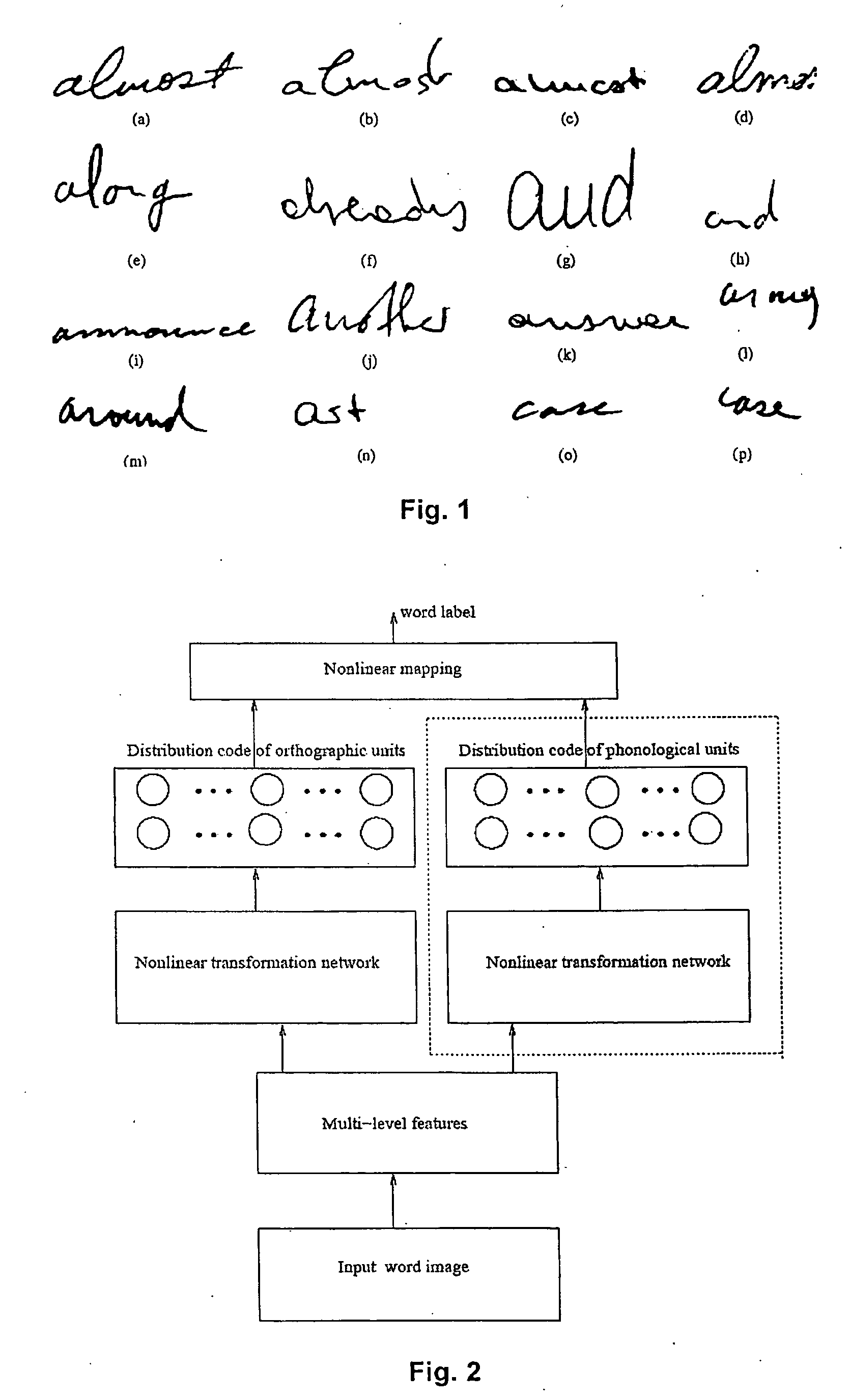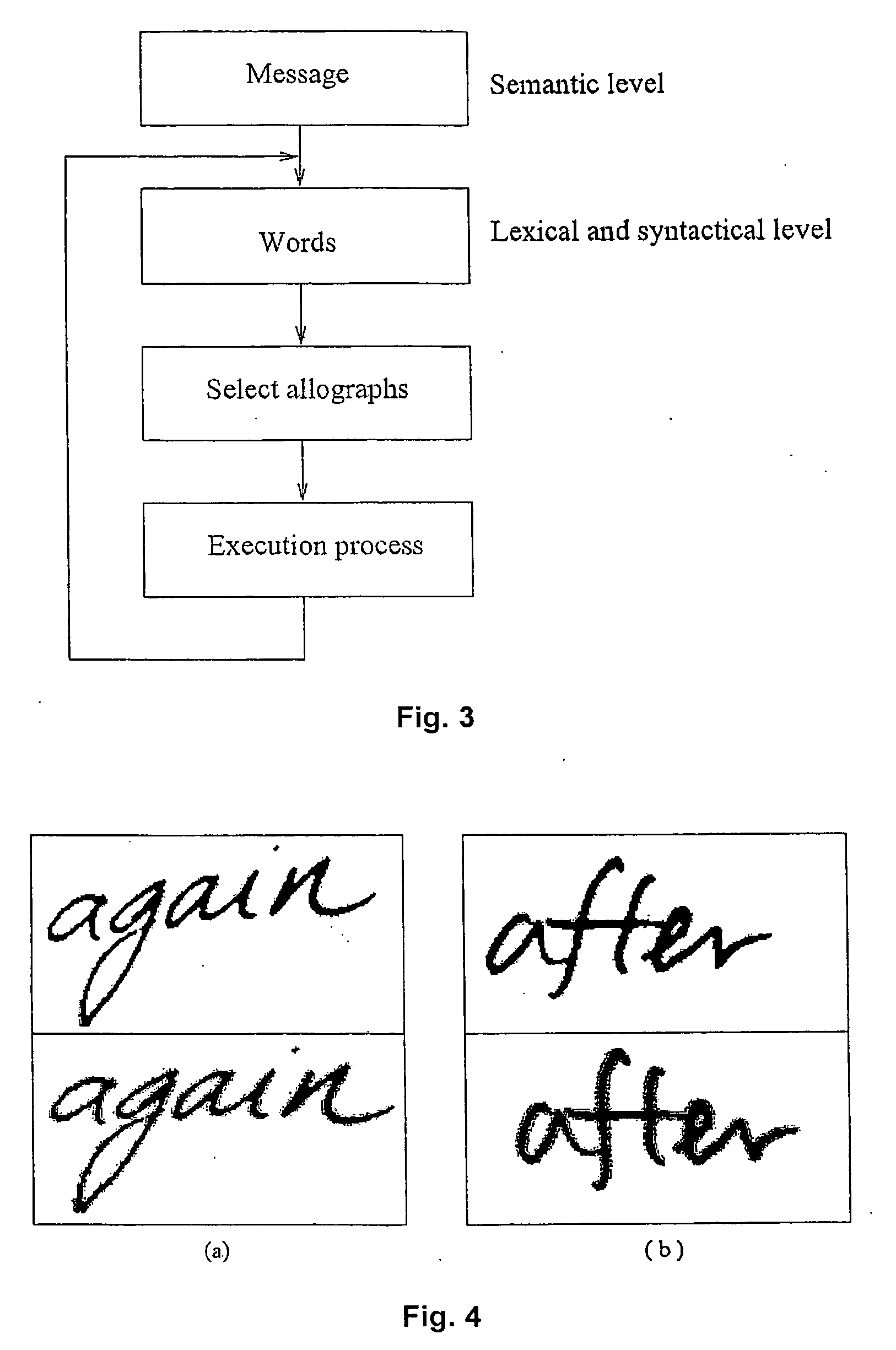Handwritten word recognition based on geometric decomposition
a geometric decomposition and handwriting technology, applied in the field of handwritten word recognition, can solve the problems of a large computational cost of this system, a large variability in the shape of handwritten words, and the inability to solve several key problems related to handwritten word recognition, so as to reduce the variability of handwritten word shap
- Summary
- Abstract
- Description
- Claims
- Application Information
AI Technical Summary
Benefits of technology
Problems solved by technology
Method used
Image
Examples
Embodiment Construction
[0142] The present invention is illustrated in further details by the following non-limiting examples.
[0143] The description of non-restrictive illustrative embodiments of the present invention is organized as follows. Section I is a brief introduction. In section II the acquisition of cursive word databases will be described. In section III, two algorithms for word skew / slant correction based on Radon transform are presented. In section IV, a concept framework of low-level word image representation is provided and its relationship with the process of handwriting production is discussed as well as some principles in vision and psychology. In sections V and VI the detailed algorithms are proposed to implement the above representation. In section V, an algorithm to locate those meaningful extreme points and build a classifier based on support vector machine to classify them into two independent channels is proposed. In section VI, a sequence of feature vectors are extracted at those ...
PUM
 Login to View More
Login to View More Abstract
Description
Claims
Application Information
 Login to View More
Login to View More - R&D
- Intellectual Property
- Life Sciences
- Materials
- Tech Scout
- Unparalleled Data Quality
- Higher Quality Content
- 60% Fewer Hallucinations
Browse by: Latest US Patents, China's latest patents, Technical Efficacy Thesaurus, Application Domain, Technology Topic, Popular Technical Reports.
© 2025 PatSnap. All rights reserved.Legal|Privacy policy|Modern Slavery Act Transparency Statement|Sitemap|About US| Contact US: help@patsnap.com



